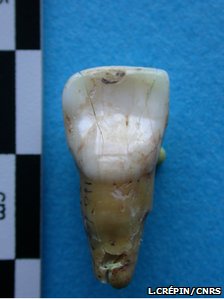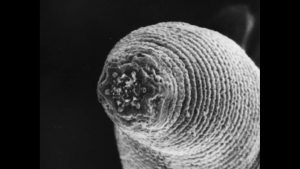As the U.S. Environmental Protection Agency (EPA) is busy girding itself for a fight over new greenhouse gas emissions rules, the U.S. Supreme Court heard arguments today in a case on whether lawsuits over climate ought to be permitted.
At stake is whether greenhouse gas pollution may be considered a “nuisance” under U.S. law. The case stems from two 2004 federal lawsuits brought by seven states and several land-trust groups alleging that emissions from five major power companies could cause harm by contributing to global warming. Rising sea levels, loss of water in the Great Lakes, and reduced hydropower were among the injuries alleged by the plaintiffs; the lawsuits have since been combined, and two states have dropped out since the original suit was filed. The district court subsequently said in its decision that the case brought up a “political” question that the other branches of government, not the judicial branch, should consider, but an appeals court reversed that ruling. When the power companies appealed, the Supreme Court took the case.
In other pollution cases, the Supreme Court has supported suits claiming that pollution caused harm as a “nuisance” under common law, most often interpreted to prohibit noise and light pollution. The 80 minutes of occasionally spirited argument at the high court this morning focused on the two main issues in the greenhouse gas litigation: For the case to go forward, the plaintiffs must prove that the case has legal standing (they must show that the court is the right venue for resolving this dispute), and that the common law definition of nuisance can support suits over greenhouse gases. On the issue of standing, the court could rule that Congress or EPA is a more appropriate body to deal with pollution control.
The Obama Administration opposed the suing states in this case largely on grounds that they lack standing, marking a rare instance in which the Administration finds itself at odds with environmentalists on a major legal issue. (Environmentalists urged the states to try this legal strategy.) U.S. attorney Neal Katyal told the justices that the complexity of the issue suggests that the executive branch, namely EPA, is a better venue for controlling such an expansive type of pollution rather than the courts. “In the 222 years that this court has been sitting, it has never heard a case with so many potential perpetrators and so many potential victims,” he said in his opening remarks. “There are billions of emitters of greenhouse gasses on the planet and billions of potential victims as well.”
The attorneys for the power companies and the Obama Administration argued that the greenhouse gases case is fundamentally different from previous nuisance cases in which pollutants have played a central role. A landmark ruling by the Supreme Court in 1907, for example, found that a judge could stop a Tennessee copper company from polluting the Georgia environment under the nuisance doctrine. Such cases, Katyal said, “are essentially: A pollutes a river or something and hurts B.” But in the case of global warming pollution, he said, “A here is the world and B is the world, and that is such a difference in scale and scope to pose enormously difficult questions” about whether such suits should go forward.
If this case is allowed to proceed, asked the justices, should subsequent cases be limited to big polluters like the five targeted in this suit? “Your briefs talk a lot about how these are the five largest [U.S.] emissions producers, but I saw nothing in your theory to limit it to those five,” Justice Elena Kagan asked New York state attorney Barbara Underwood, who spoke on behalf of the six states in the suit. “Is there something that you think limits it to large emissions producers rather than anybody in the world?”
The states have argued that the larger the greenhouse gas emitter the stronger the connection linking pollution and potential harm. “These defendants,” Underwood said, speaking of the five polluters, “produce 650 million tons a year or 10% of U.S. emissions, and individually they produce amounts ranging from 1 to 3.5% of U.S. emissions.”
Those who challenged the states also suggested that courts would be ill-equipped to make the complex judgments that big regulatory agencies staffed with scientists and other experts make on a routine basis. Judges lack “the resources, the expertise” to be a “kind of super-EPA,” said Justice Ruth Bader Ginsburg.
But Underwood said courts could make such judgments—which could include determining how “substantial” an emitter must be to be found culpable—by relying on standards set by the agencies. She pointed to a cutoff set by EPA that limits regulated greenhouse gas polluters to those that emit 100,000 tons or more per year. “According to EPA’s own technical data, there would be at most a few thousand potential defendants.”
Because Justice Sonia Sotomayor recused herself—she sat on the panel that reviewed the issue in the appeals court—only eight justices heard the arguments. A 4-4 tie would mean litigation against the polluters could go forward, because that would leave in effect the earlier decision by the appeals court. While the tone of the questioning was largely skeptical toward the idea that such suits ought to go forward, divining a final ruling from the rough-and-tumble of oral argument can be difficult, especially because justices often ask tough questions of those they’re inclined to agree with—just to test their counterarguments. Eyes were squarely focused today on Justice Anthony Kennedy, often the swing judge when decisions are split 5-4 in favor of conservative decisions. Kennedy raised a concern that federal law, and EPA’s efforts to use that law, would necessarily “preempt” the common law. The court’s three liberal members, Ginsburg, Stephen Breyer, and Kagan, seemed skeptical on this issue, too.
At least one knowledgeable observer said a 4-4 tie was unlikely. “In short, this particular lawsuit seemed doomed, with the court’s biggest task figuring out how to say so without shutting the courthouse door entirely to such claims,” said longtime Supreme Court reporter Lyle Denniston.
:: Read original here ::






